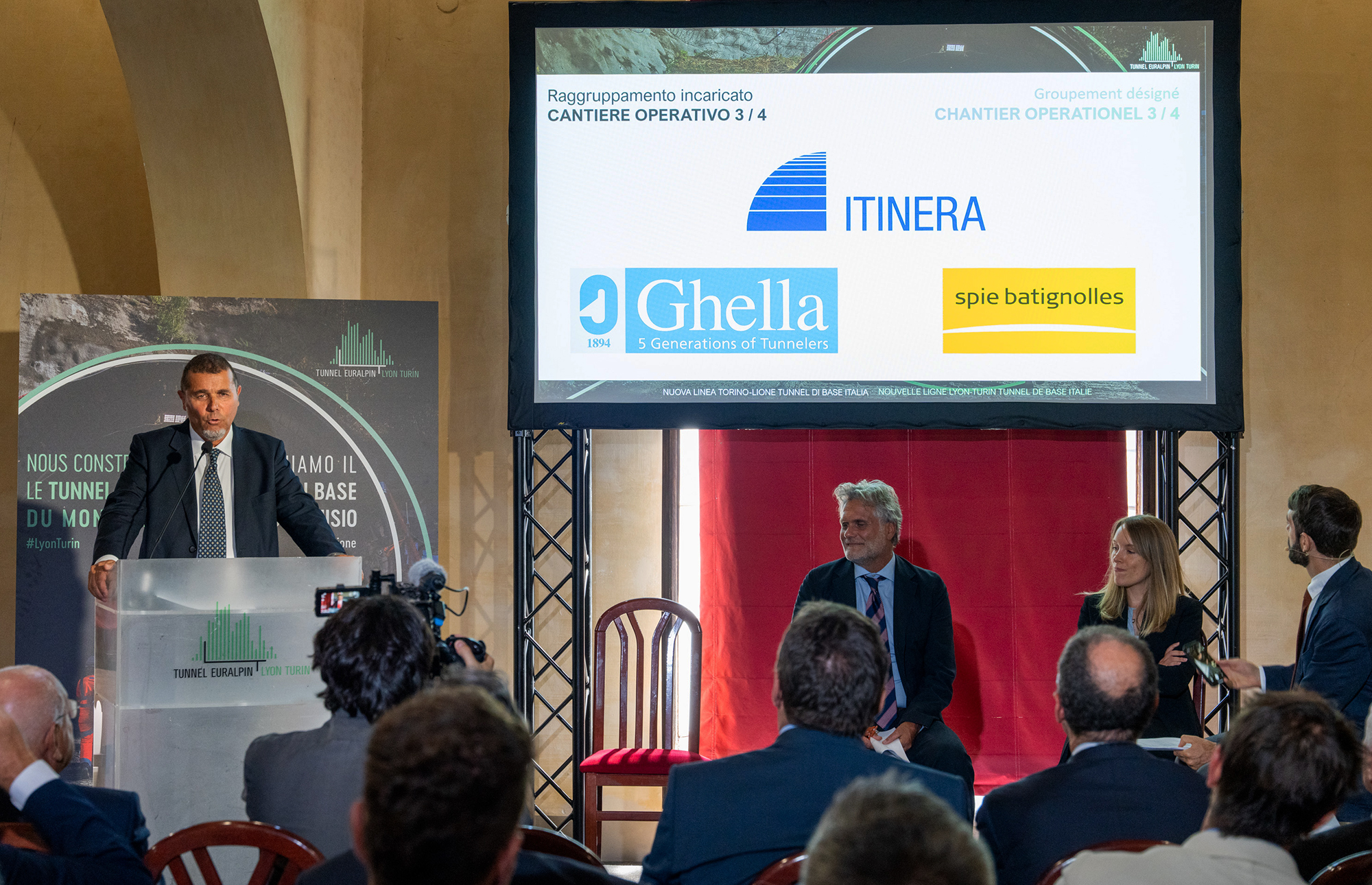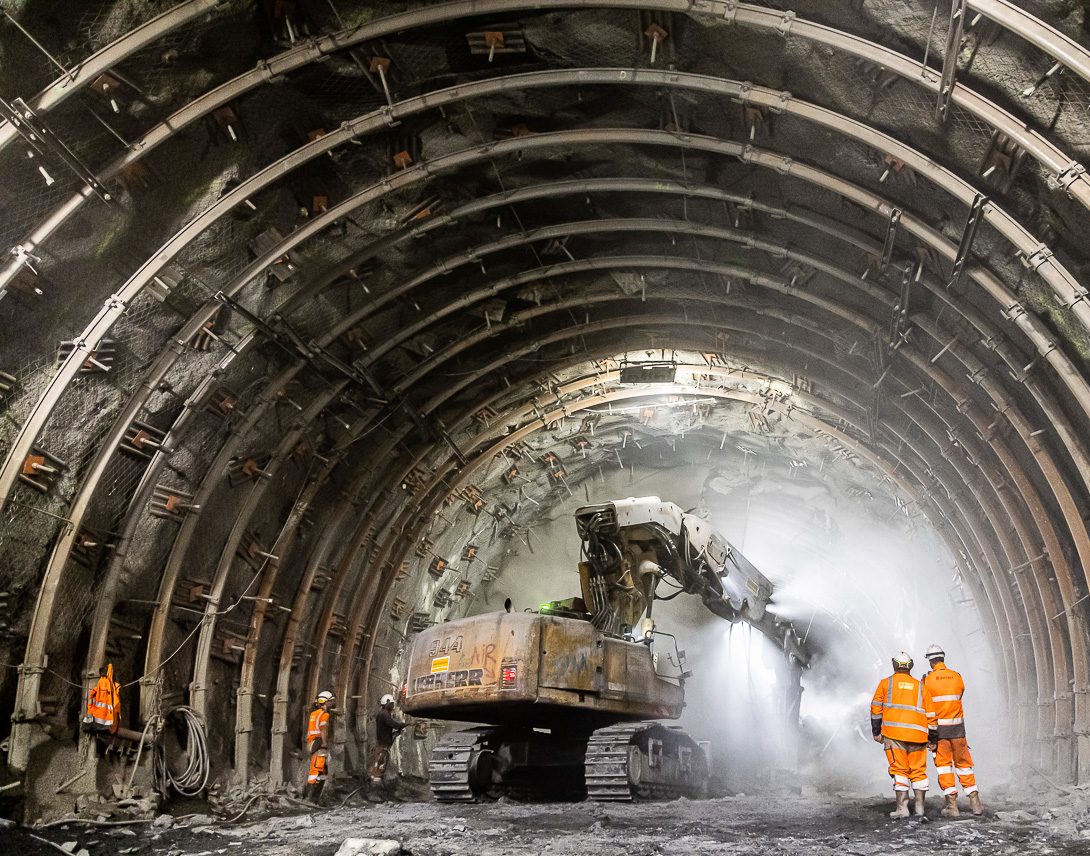Today in Rome, during a press conference at the Casa dei Cavalieri di Rodi, the President and CEO of TELT announced the names of the companies that won the international tender for the excavation of the Mont Cenis base tunnel in Italy.
The contract worth EUR 1 billion was awarded to the group of companies composed by Itinera (group head) , Spie Batignolles and Ghella. This completes the awarding of all works for the excavation of the 57.5 km railway tunnel under the Alps co-financed by Europe, France, and Italy.
This important milestone in the advancement of the binational Lyon-Turin project is the result of an extraordinary cooperation between France and Italy and the support of the European Commission. Now that all the contracts for excavating the tunnel have been awarded, this central link in the Mediterranean Corridor of the TEN-T network can become even more real. One more step towards decarbonising transport in a better-connected Europe. – Daniel Bursaux, TELT President
Today we reach a historic milestone for the Alpine crossings: with this contract, the excavation work on the Mont Cenis base tunnel is also starting in Italy. This result could have not been taken for granted until a few years ago and was achieved thanks to the commitment of the technicians, the support of the Italian and French institutions and social partners, and the great support of Europe. As for the construction sites in France, this contract award will quickly translate into jobs, generating important opportunities for the territory already during the construction phase. We would like to thank not only the group of companies that won the tender, but all the companies for the quality of the proposals they submitted, which fully met our requirements particularly in terms of innovation and sustainability. – Maurizio Bufalini, TELT General Director
Work in the Italian section of the tunnel
The work is being carried out in the Susa valley (Piedmont) starting from the already active construction site in the Maddalena di Chiomonte area that, at peak activity, foresees more than 700 workers. The contractors who will be setting up in the coming months will build the section of the tunnel up to the Susa entrance, in addition to the associated accessory technical tunnels. 91 months of work are planned for a total excavation of 28.5 km: in addition to the two tubes of the base tunnel, also to be built are the Maddalena 2 tunnel, through which the tunnel boring machines will descend, the connecting tunnels, the connecting branches between the two tubes, the Clarea safety site and the cut-and-cover tunnel at the eastern entrance to Susa. For the excavation from the Clarea safety site to Susa, the use of two dual-mode TBMs is planned. These are capable of changing their mode of progress according to the type of soil they face. To this end, these TBMs are equipped with a head with rotating cutters that can excavate hard rock or “soft” ground (i.e., consisting of sand or gravel). In the presence of this more friable soil, the TBM is then configured to support the tunnel face by exerting an active counterpressure that allows it to advance safely. This is planned to take place in a section of approximately 1.5 km in the Cenischia valley undercrossing. During the work, 2.3 million cubic meter of materials will be extracted, up to 60% of which will be reused within the “single construction sites” of the international section.
The procedure and awarding criteria
It was a demanding tender for which almost 7,000 documents were received. In the evaluations, the financial criterion was flanked by a technical criterion that first analysed the quality of the proposed solutions both from the point of view of construction time and with respect to environmental sustainability and job placement. In particular, the contract required companies to guarantee the supply of energy from renewable sources.



